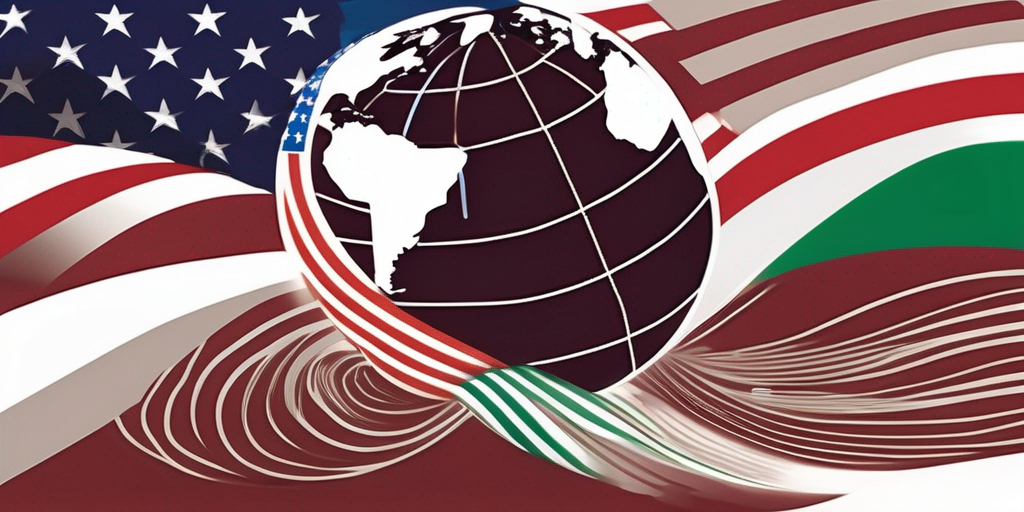How To Ship From The US To Italy

Shipping goods from the US to Italy may seem like a complex process, but with proper guidance and knowledge of international shipping basics, you can avoid common pitfalls and ensure a smooth delivery. This article will provide you with the essential information you need to navigate the shipping process effectively, from understanding packaging requirements to addressing and labeling your package correctly.
Considerations When Shipping To Italy
Italy is a member of the European Union (EU) and follows the EU customs regulations. This means that when shipping from the United States to Italy, you need to comply with specific requirements to ensure a hassle-free shipping experience.
To ship from the US to Italy, you will need to provide specific documentation. This typically includes a commercial invoice, a packing list, and a completed customs declaration form. These documents help customs officials understand the nature of the shipment, its value, and its contents.
VAT
When shipping to Italy, or anywhere in the EU, be sure to review VAT regulations and the required registration process to get to the Import One Stop Shop (IOSS) platform for goods valued up to €150.
EORI Number
Often Europe-based businesses need to register for an Economic Operators Registration and Identification (EORI) number. Private individuals don’t always have to, so this might not be a concern, but it’s worth reviewing.
If you are exporting a parcel to the EU, you — as the shipper — will have to hand over either the receiver’s EORI number or a tax ID number. For Italy you’ll typically need a recipient’s tax ID number not the EORI.
ICS2
The EU has a set of rules around customs pre-arrival security and safety program known as the Import Control System 2 (ICS2). You can learn more about ICS2 here. Requirements for adherence include:
- A 6-digit Harmonized System (HS) ID for every item
- A description of the goods you are shipping and the purpose of the shipment
Understanding International Shipping Basics
Before you start shipping to Italy, it is crucial to grasp the fundamentals of international shipping. One of the first considerations is the importance of proper packaging.
The Importance of Proper Packaging
When shipping goods across borders, proper packaging plays a vital role. Using sturdy and appropriate-sized boxes, padding materials, and secure sealing not only protects your items from damage but also ensures that the package complies with shipping carrier guidelines.
Proper packaging is especially important when it comes to international shipping because your package will go through various handling processes and may be exposed to different weather conditions. By using sturdy boxes and adequate padding, you can minimize the risk of your items getting damaged during transit.
In addition to protecting your items, proper packaging also helps ensure that your package complies with shipping carrier guidelines. Different carriers may have specific requirements for packaging, such as weight limits and restrictions on certain materials. By following these guidelines, you can avoid any potential issues or delays in the shipping process.
Weight and Dimension Considerations
Weight and dimensions are essential factors to consider when shipping internationally. Most carriers have specific weight limits, and failing to adhere to these restrictions can result in extra fees or even package rejection. It is crucial to accurately measure and weigh your package before choosing a shipping carrier.
When measuring the dimensions of your package, it is important to consider both the length, width, and height. Some carriers may have restrictions on the maximum size of packages they can handle, so it is important to ensure that your package falls within their limits.
Additionally, the weight of your package can also affect the shipping cost. Carriers often have different pricing tiers based on weight, so it is important to accurately weigh your package to determine the most cost-effective shipping option.
Choosing the Right Shipping Carrier
Once your items are properly packaged and ready for shipment, selecting the right shipping carrier is crucial. Look for carriers that specialize in international shipping to Italy, as they have expertise in navigating customs regulations and can often offer competitive rates.
When choosing a shipping carrier, it is important to consider factors such as reliability, transit times, and cost. International shipping can be complex, with customs procedures and potential delays, so it is important to choose a carrier that has experience in handling these challenges.
Research different carriers and compare their rates and services to find the best fit for your shipping needs. Consider factors such as tracking capabilities, insurance options, and customer reviews to ensure that you are choosing a carrier that can provide a smooth and reliable shipping experience.
Understanding Duties and Taxes
When shipping internationally, it is crucial to be aware of any duties and taxes associated with your shipment. Duties are customs fees imposed on imported goods, while taxes are additional charges based on the value-added tax (VAT) or other applicable taxes.
In Italy, the recipient is typically responsible for these fees, which are based on factors such as the item’s value and the type of goods being shipped. It is important to communicate these potential costs to the recipient beforehand to avoid any surprises.
It is worth noting that certain goods may be eligible for duty-free importation under specific circumstances. For example, personal effects and used household goods may qualify for duty exemption if they meet certain criteria. Consulting with a customs expert or your shipping carrier can help you understand the specific duty and tax implications for your shipment.
Restricted and Prohibited Items
Italy, like any other country, has restrictions and prohibitions on certain goods. These regulations are in place to protect public health, safety, and national security. It is essential to review the Italian customs website or consult with your shipping carrier to determine if any of your items fall into these categories.
Prohibited goods can range from weapons and drugs to perishable items and specific types of electronics. For example, importing firearms, narcotics, or counterfeit goods is strictly prohibited. Additionally, certain agricultural products, such as plants or animal products, may require special permits or undergo inspections to prevent the introduction of pests or diseases.
Understanding the restrictions and prohibitions is crucial to avoid potential penalties, confiscation of goods, or legal consequences. If you are unsure about the eligibility of an item for importation, it is always best to seek guidance from customs authorities or professional customs brokers.
As you navigate the customs regulations when shipping to Italy, remember that compliance and accurate documentation are key. By understanding the required documentation, duties and taxes, and restrictions on certain items, you can ensure a smooth customs clearance process and a successful shipment to the beautiful country of Italy.
Shipping Costs and Timeframes
When it comes to shipping, there are several factors to consider, such as weight, dimensions, and the chosen carrier. These factors can greatly impact both the cost and the timeframe of your shipment. Let’s dive deeper into these considerations to help you make an informed decision.
Factors Affecting Shipping Costs
Shipping costs are influenced by various factors. One of the primary factors is the weight of your package. Heavier packages generally cost more to ship due to the additional resources required for transportation. Similarly, the dimensions of your package can also affect the cost. Larger packages may require special handling or take up more space, leading to higher shipping fees.
Another crucial factor is the destination of your shipment. Shipping internationally, for example, often incurs higher costs compared to domestic shipping. This is because international shipments involve additional customs procedures and may require specialized documentation.
Additionally, if you require any additional services, such as insurance or express delivery, these can also impact the overall shipping cost. Insurance provides coverage in case of loss or damage during transit, while express delivery ensures faster shipping but at a higher price.
Given the multitude of factors affecting shipping costs, it is advisable to compare rates from different carriers. By doing so, you can find the most cost-effective option for your specific shipment.
Estimating Delivery Timeframes
When it comes to estimating delivery timeframes, several factors come into play. For shipments from the US to Italy, the chosen carrier and service level selected are the primary determinants of shipping time.
Express or expedited services typically offer faster delivery at a higher cost. These services prioritize your shipment and often come with guaranteed delivery dates. If time is of the essence, opting for an express service can ensure your package arrives promptly.
On the other hand, standard or economy options may take longer to deliver but are more budget-friendly. These services are suitable for shipments that are not time-sensitive and can withstand a slightly longer transit period.
It’s important to note that delivery timeframes can also be affected by external factors beyond the carrier’s control. These factors include weather conditions, customs clearance procedures, and any unforeseen circumstances that may arise during transit.
By considering these factors and understanding the various options available, you can make an informed decision regarding shipping costs and timeframes for your specific needs.
Addressing and Labeling Your Package Correctly
Accurate addressing and labeling are critical to ensure your package arrives at its intended destination. It is essential to provide the complete and correct address details for both the sender and the recipient.
The Importance of Accurate Addressing
Mistakes in address details, such as misspelled street names or incorrect postal codes, can result in lost packages or significant delays. Double-check all address information to avoid any potential complications.
Labeling Requirements for International Shipping
When labeling your package, it is essential to include clear and visible labels with both the sender’s and recipient’s names, addresses, and contact information. Additionally, it is advisable to include labels such as “Fragile” or “Handle with Care” when appropriate.
In conclusion, successfully shipping from the US to Italy requires understanding international shipping basics, navigating customs regulations, estimating shipping costs and timeframes, considering insurance and tracking options, and addressing and labeling packages correctly. By following these guidelines and working with reputable shipping carriers, you can ensure your goods arrive safely and efficiently at their destination.
